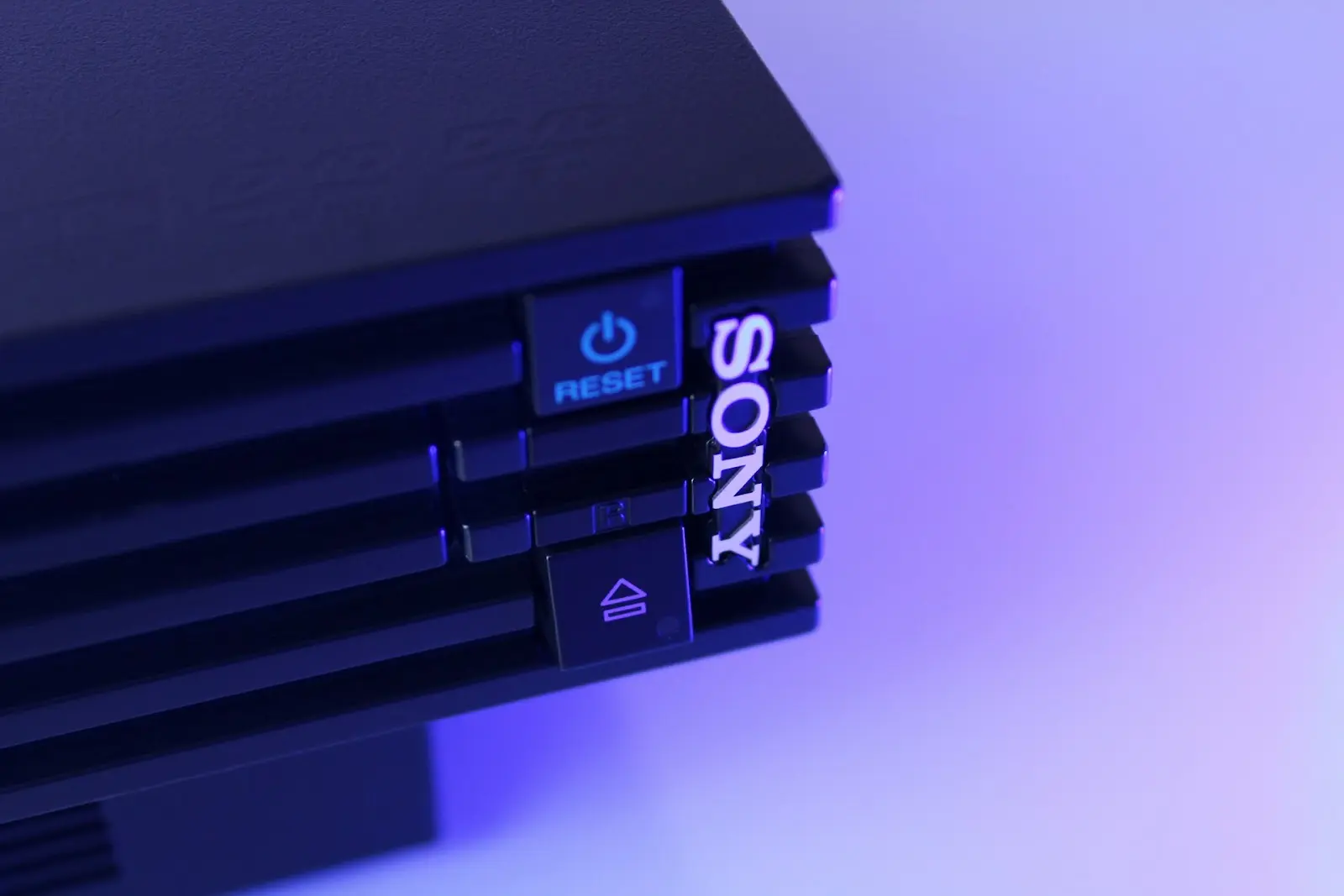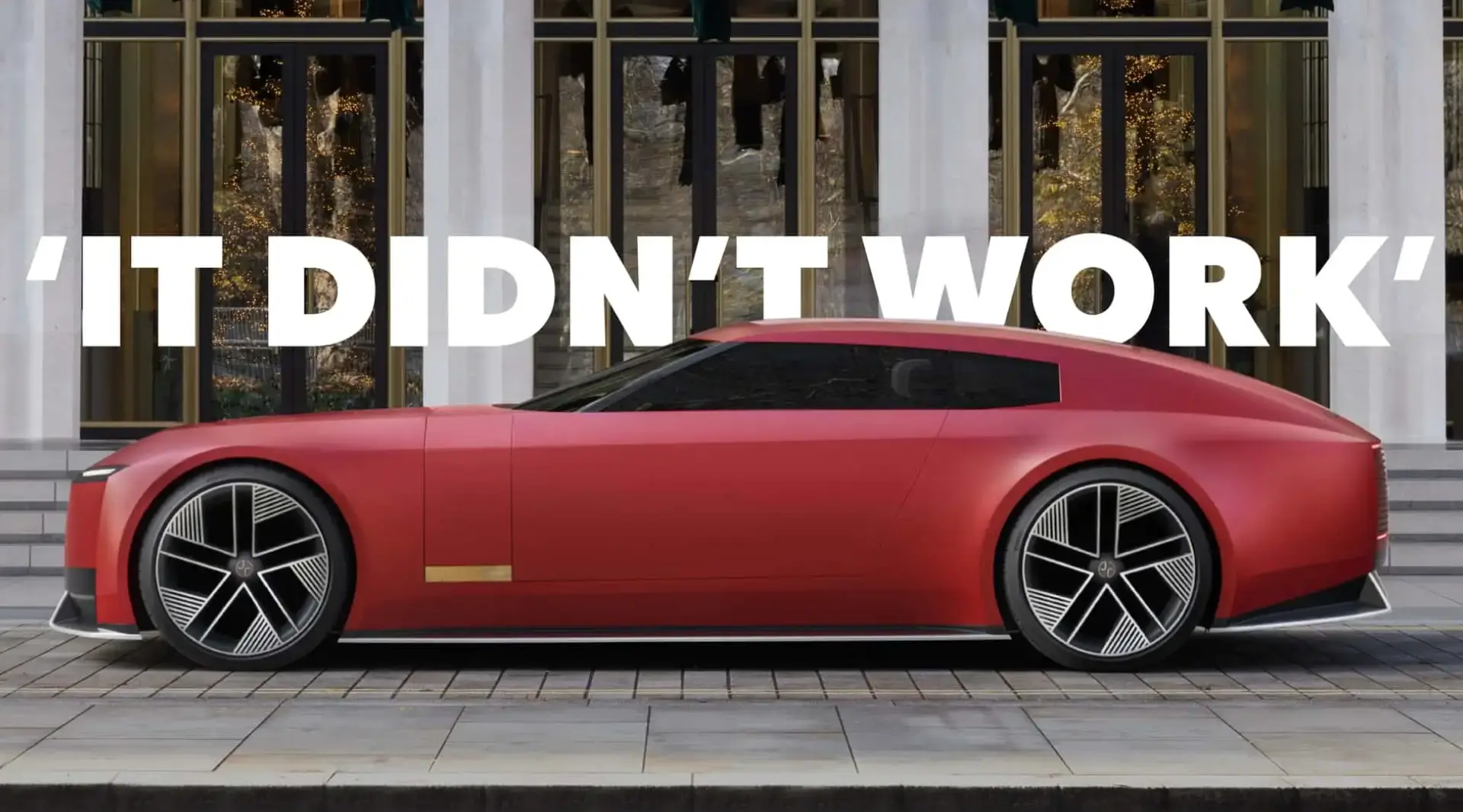Everything You Need To Know About Sony’s Marketing Strategy
Updated on
Published on

Sony Interactive Entertainment (SIE) plays a pivotal role in shaping the marketing strategy for the iconic PlayStation brand. At the helm of cutting-edge gaming technology, the PlayStation family, encompassing consoles such as the PlayStation 5, PlayStation 4, and PlayStation VR, falls under the jurisdiction of SIE. As a wholly-owned subsidiary of the globally recognized Sony Group Corporation, SIE operates from its headquarters in San Mateo, California, maintaining additional offices in London and Tokyo. The roots of this industry giant trace back to its founding year in 1946 by Masaru Ibuka and Akio Morita, establishing a strong foundation that has propelled Sony's rise in the corporate world.
Sony, headquartered in Konan, Minato, Tokyo, has earned its place on the global stage, securing the 122nd rank on the Fortune Global 500 list and claiming the 47th position among the world's most valuable brands, according to Forbes in 2020. Sony India Pvt. Ltd., located in New Delhi, stands out as one of the largest TV manufacturers in India, contributing to Sony's diverse presence in the consumer electronics market. Quick stats reveal Jim Ryan as the CEO of Sony Interactive Entertainment, steering the company's vision to develop world-class games. Eric Lempel takes charge as the Chief Marketing Officer (CMO), overseeing the global marketing endeavours of the renowned brand. Sony's influence in the video game industry is substantial, boasting a market share and revenue of 64.5%. At the core of its mission is a commitment to creating top-tier gaming experiences, encapsulated in its tagline, "Live In Your World. Play In Ours."
Sony's target audience is characterized by its broad inclusivity, spanning a wide range of customers and diverse age groups and preferences. The company strategically tailors its products and services to appeal to individuals of all ages, ensuring an all emcompassing market reach. With a particular focus on tech-savvy and gadget-interested individuals, Sony marketing captures the attention of those who are keen on cutting-edge technology and innovation. Moreover, the brand attracts intellectually curious consumers, fostering a connection with individuals who value exploration and openness to new experiences. While Sony's appeal is widespread, the primary age demographic targeted falls within the range of 18 to 40, aligning its marketing strategies with the preferences and lifestyles of this dynamic and influential segment of the population.
Sony's Brand Identity and It’s Influence On Marketing
Sony's marketing strategy is rooted in a strong brand identity associated with innovation, quality, design, and reliability. Their core values include a commitment to innovation, delivering high-quality products with sleek designs, and ensuring product reliability. This brand identity is not merely a symbol but a driving force that shapes Sony's marketing, dictating product offerings and steering the direction of their advertising campaigns. Sony's marketing campaigns revolve around highlighting technological advancements, prioritizing user experience, and developing emotional connections with consumers. Innovation remains a central theme in Sony's marketing playbook, influencing both product development and the narrative of their marketing initiatives. The company's substantial investment in research and development underscores its dedication to creating groundbreaking products that align with the ever-evolving demands of consumers. Sony's approach to marketing innovation is multi-faceted, embracing social media engagement, collaborations, and promotion as integral components of its strategy. Additionally, Sony's adeptness in adapting marketing strategies to different regions, taking into account cultural nuances and consumer preferences, showcases a nuanced and globally responsive approach. Strategic partnerships and collaborations further emphasize the impact of globalization on Sony's marketing endeavours, facilitating the expansion of its reach and influence on a global scale.
10 Marketing Strategies SONY Uses
- Aggressive Promotion: Sony's marketing strategy emphasizes its commitment to making the PlayStation brand well-known by investing a lot in promotional activities. The company's slogan, "Play has no limits" encapsulates the essence of its gaming philosophy and sets the tone for an aggressive and boundary-pushing marketing strategy. Sony marketing strategy ensures a global presence through prominent campaigns and exhibitions that capture the attention of audiences worldwide. This aggressive promotion not only strengthens brand recall but also reinforces the idea that PlayStation is not just a product but a lifestyle.
- Segmentation, Targeting, and Positioning: Sony's meticulous approach to segmentation, targeting, and positioning has been pivotal in its sustained success. The segmentation strategy revolves around categorizing gamers based on demographic factors such as age, gender, and income. Geographically, Sony marketing focuses on key markets like North America, Japan, and Europe. The demographic segmentation is particularly noteworthy, catering to both male and female players across various age groups. The PlayStation 5, with its cutting-edge features and performance capabilities, is strategically positioned as the console of choice for hardcore gamers, reinforcing a distinct brand image.
- Marketing Campaigns: Sony's marketing campaigns are emblematic of its innovative spirit, with collaborations and initiatives that resonate with diverse audiences. The transformation of iconic Underground stops into PlayStation symbols in major cities demonstrates a creative and impactful approach to urban advertising. The collaboration with Travis Scott for the Cactus Jack x PlayStation Nike Dunks not only aligns with current streetwear trends but also expands the brand's reach beyond the gaming community. These campaigns transcend traditional marketing boundaries, fostering a holistic brand experience.
- Social Media Marketing: Sony's social media prowess is evident in its vast following across major platforms. With over 2.3 million followers on TikTok, 2 million on Instagram, thousands on LinkedIn, and 6 million on Twitter, Sony marketing strategy has created a robust digital community. The company effectively utilizes these platforms to engage with fans, share game-related content, and promote exclusive offers. The interactive nature of social media marketing ensures a continuous and dynamic dialogue between the brand and its audience.
- SEO Strategies: Sony's commitment to maintaining a strong online presence is reflected in its robust SEO strategies. Boasting millions of keywords and approximately millions of organic visitors per month, Sony marketing strategy ensures high visibility in search engine results. The high domain authority further solidifies its position, making PlayStation products easily discoverable and accessible to potential consumers.
- Influencer Marketing: The leverage of a dedicated gaming community for free influencer marketing has been a masterstroke in Sony's strategy. Collaborations with influential content creators, such as PewDiePie, amplify the brand's reach and resonate with a broader audience. By aligning with influencers who have a genuine connection with the gaming community, Sony advertising fosters authenticity and credibility, crucial elements in the highly discerning gaming industry.
- E-commerce Strategies: Sony's e-commerce strategies are designed for global accessibility. PlayStation products are not only sold through Sony stores but are also made available on various online platforms and retail electronics stores. Collaborations with e-commerce giants like Amazon, eBay, and Flipkart ensure a seamless shopping experience for consumers, irrespective of their location.
- Mobile Apps: The introduction of PlayStation Now, a subscription-based game streaming service, exemplifies Sony's foray into the mobile app realm. With over 450 games available, the app provides a Netflix-like experience for gamers. This strategic move aligns with the evolving preferences of modern consumers, who seek flexibility and convenience in their gaming experiences.
- Content Marketing: Sony marketing team actively engages in content marketing, recognizing its role in building and nurturing a vibrant gaming community. Regular and relatable content shared on social media platforms keeps the audience engaged and invested in the brand. Organizing events, launches, and contests not only generates excitement but also fosters a sense of community among gamers, solidifying brand loyalty.
- Digital Marketing Strategy: In line with contemporary marketing practices, Sony marketing team employs the "POEM Model" (paid, owned, and earned marketing). Paid promotions, often featuring celebrities and sponsored marketing initiatives, are instrumental in elevating brand visibility. Owned platforms, with a notable emphasis on Instagram and other social media channels, provide Sony with direct and controlled means of brand communication. The earned marketing component is exemplified through third-party promotions and significant campaigns like the PS5 launch, showcasing Sony's ability to garner external endorsements and collaborations for a broader and more impactful digital reach.
7’Ps of SONY

1. Product
Sony has a diverse and expansive product portfolio, including consumer electronics, gaming consoles, IT products, and entertainment. The major product categories span audio devices, televisions, video equipment, games (PlayStation), semiconductors, computers, motion pictures, television shows, and mobile phones. The introduction of customized PlayStation cards and reward credit cards highlights this diversification and demonstrates Sony's flexibility in responding to changing market demands. The brand's commitment to delivering high-quality products is evident across various categories, from cutting-edge televisions (Bravia, Android TV, LCD, LED) and imaging devices (Cybershot, Handycam, Memory Cards) to audio and video equipment (Walkman, Digital Audio Players, Home Theatres), computer peripherals (Hard Discs, Pendrives, Memory Cards), gaming consoles (PlayStation), laptops, computers, smartphones, and tablets.
2. Price
In terms of pricing, Sony caters to different market segments. Employing a three-tiered pricing strategy, the company targets the economy, middle-class, and high-end buyers. Sony strategy often utilizes a price skimming strategy, initially setting higher prices for unique products and gradually reducing them over time. The introduction of high-definition televisions and the iconic Walkman are examples of this. Despite a high pricing policy, Sony justifies these premium prices through an emphasis on product quality. However, the brand faces challenges from low-priced alternatives, especially from Chinese competitors, prompting Sony to incorporate premium pricing, economy pricing, and promotional pricing strategies to maintain competitiveness.
3. Place
Sony focuses on an efficient channel strategy to make products readily available to customers. Employing selective distribution, particularly through dealers like Sony World, ensures control and exclusivity in the distribution network. With over 7,000 channel partners, 260 Sony outlets, and 21 branch locations in India, Sony utilizes a one-level distribution channel and various channels such as direct sales through its website, distributors and retailers channels, and wholesalers for indirect distribution. The brand's international availability is further expanded through brick-and-mortar Sony stores and e-commerce platforms, solidifying its global presence.
4. Promotion
Promotion is a pivotal element in Sony's marketing strategy, with the tagline "Make. Believe" symbolizing the essence of innovation and creativity. Celebrity endorsements are employed to enhance product visibility. Sony employs a pull strategy, focusing on attracting customers through advertising and promotional efforts across various channels, including newspapers, television, billboards, magazines, and web marketing. Controversial yet attention-grabbing advertisements, such as the "white is coming" campaign to advertise their white model of Playstation, have been utilized to generate publicity. The brand allocates significant funds for television commercials annually, with other promotional strategies including sales promotion, promotional pricing, leaflet placements, and creating a comprehensive promotional mix to bolster Sony's market presence and brand recognition.
5. Process
Sony employs an umbrella branding strategy, placing the product name along with the corporate name to strengthen its brand. This approach ensures a unified brand identity across its diverse product portfolio. Sony places a significant emphasis on research and development (R&D) to introduce technologically innovative products. The commitment to user-friendly interfaces and hardware is evident in its product design and development, contributing to a positive user experience. This commitment aligns with Sony's core values, emphasizing innovation, quality, and reliability.
6. People
The people aspect of Sony is reflected in its key executives, including Howard Stringer (Chairman, CEO, and President), Hiroshi Yoshio (Executive Deputy President of Consumer Products & Devices Group), and Kazuo Hirai (Executive Vice President of Networked Products & Services Group). With a global workforce of 167,900 employees, Sony prioritizes talent development initiatives and job rotation projects to identify and nurture future business leaders. This investment in human resources ensures a skilled and adaptable workforce capable of driving Sony's continued success.
7. Physical Evidence
Physical evidence encompasses Sony's tangible presence, with the corporate headquarters located in Tokyo and subsidiaries in prominent locations like New York and Florida. Notably, Sony has established the Wonder Technology Lab in New York City, serving as an interactive technology and entertainment museum. This facility not only showcases Sony's technological prowess but also provides an engaging and educational space for visitors. Additionally, Sony Plaza in New York City serves as a hub, offering shopping and informational resources. The main company website is a vital component of Sony's physical evidence, offering comprehensive information and support services to users globally, reinforcing its commitment to customer satisfaction and engagement. Overall, Sony's approach to process, people, and physical evidence reflects a holistic strategy aimed at maintaining a strong brand presence and delivering exceptional value to its customers.

Sony’s Best Marketing Campaigns
Sony marketing has employed a diverse range of marketing strategies and campaigns over the years, showcasing its adaptability and innovation in the market. One of the notable initiatives was the "make.believe" campaign introduced in 2009. Aiming at replacing the "like.no.other" slogan, this strategy sought to unify Sony's communication efforts and breathe new life into the brand. With a substantial budget of US$100 million allocated in 2010, the campaign emphasized 3D offerings and featured renowned personalities like Peyton Manning and Justin Timberlake. In addition to overarching brand campaigns, Sony executed product-line-specific campaigns, each designed to capture attention through creativity and uniqueness. Advertisements such as "Paint," "Play-Doh," "Pyramid," "Dominoes," and "BRAVIA-drome" showcased Sony's commitment to visual innovation and engaging storytelling.
Sony's marketing history also includes controversial campaigns that sparked public discussion. The graffiti advertisements for the PlayStation Portable in 2005, where Sony admitted to hiring graffiti artists for promotional activities, faced backlash and legal issues. Another controversial instance was the "All I want for Xmas is a PSP" website in 2006, where Sony faced criticism for a poorly executed viral marketing attempt. The Walkman's marketing in 1979 marked a pivotal moment for Sony, introducing the Walkman to the global market. The campaign emphasized 'Japanese-ness,' highlighting miniaturization and high technology, and employed regional variations like "Freestyle" in Sweden. Sony's attempt to integrate its Xperia Z Series into popular culture is evident in its 2013–2015 campaign. The company aimed to feature Daniel Craig using the Xperia Z4 in the James Bond movie "Spectre," offering $5 million for the placement. However, the effort faced a setback when Craig declined, stating that Sony phones weren't deemed cool enough for James Bond. Eventually, the Xperia Z5 became the official smartphone for James Bond in the film. These varied marketing strategies demonstrate Sony's agility in navigating different creative avenues, from visually stunning product-specific campaigns to navigating through controversies and integrating its products into iconic cultural moments.
SONY’s Top 5 Competitors
Sony faces stiff competition in the consumer electronics industry, with several prominent players vying for market share. Here are Sony's top 5 competitors:
- Samsung: A global electronics giant, Samsung competes fiercely with Sony across various product categories, including smartphones, TVs, home appliances, and audio devices.
- LG (Lucky Goldstar): LG is another South Korean conglomerate that rivals Sony, particularly in areas such as televisions, home appliances, and mobile devices.
- Panasonic: As a Japanese multinational, Panasonic is a direct competitor to Sony, offering a wide range of consumer electronics and appliances.
- Philips: A Dutch multinational, Philips, competes with Sony in the consumer electronics market, especially in areas like TVs, audio equipment, and lighting.
- Dell: While Dell is more focused on computers and IT solutions, it still competes with Sony in the broader consumer electronics market, particularly in laptops and desktop computers.
Sony has also unveiled its latest audio brand platform, "For The Music," focusing on championing creator vision and providing an immersive music experience for artists and fans alike. The campaign is set to support Sony Music Entertainment and Grammy Award-winning artist Miguel as the first artist to be featured in "For The Music." Miguel scales a skyscraper and smashes through glass walls in the Liam McRae-directed campaign launch video, symbolizing his musical development and Sony's dedication to assisting creators in overcoming creative barriers. "For The Music" aims to foster end-to-end collaboration with artists, supporting them from the creation to the consumption of music. The platform will prioritize artist development, offering support for creative endeavours, specialty content, activations, and experiences. Additionally, it will provide artists with input and access to professional products and tools, enhancing content creation approaches and improving the listening experiences of fans through consumer products like headphones and wireless speakers. The platform emphasizes the importance of putting creator vision first and serves as a bridge connecting artists and fans, turning artist visions into reality. As part of the campaign launch, Sony and Miguel will host various giveaways, VIP experiences, and sweepstakes, including an opportunity for fans to attend Miguel's upcoming album launch party in Los Angeles, California.
Sony Group Corporation last year initiated the annual Sony Research Award Program, signalling the start of its call for research proposals beginning on July 15, 2023. The program is a pivotal component of Sony's commitment to open innovation, providing sponsored research funding for projects centred on emerging and innovative technologies. Open to universities and research institutions in the U.S., Canada, 17 European countries, and India, the program collaborates with Sony Group's research units to support groundbreaking initiatives. The program features two awards: the Faculty Innovation Award, offering up to $100,000 USD for one year to principal investigators in three subject categories, and the Focused Research Award, providing up to $150,000 USD for one year to researchers focusing on 12 themes aligned with Sony's immediate interests. With an emphasis on fostering global collaboration, the Sony Research Award Program aims to catalyze breakthrough technologies and innovations by facilitating partnerships between researchers and the Sony Group.
Sony Interactive Entertainment has also announced the removal of the PlayStation Plus Collection, a library of 19 PS4 games exclusively available to PS5 owners who are members of the paid PlayStation Plus subscription service, effective May 9, 2023. Users are encouraged to redeem these games until the specified date, and those who have already redeemed them will retain access as long as they maintain their PlayStation Plus subscription. Launched initially with 20 games, including notable titles like God of War, Fallout 4, and The Last of Us Remastered, the collection saw success but will now undergo discontinuation. Despite this, Sony reported impressive sales for the PlayStation 5, reaching its best sales quarter as of December 31, 2022, with 7.1 million units sold and a total of 32 million consoles shipped. Jim Ryan, CEO of Sony Interactive Entertainment, had previously hinted at the collection's future being contingent on user reception, emphasizing a focus on high-budget games and expressing skepticism about subscription models like Xbox Game Pass. The announcement also included the reveal of February's PlayStation Plus Essential games, featuring titles like OlliOlli World and Destiny 2: Beyond Light.

Sony demonstrates a proactive approach by closely monitoring and integrating the latest marketing trends into its strategy. The company recognizes the dynamic nature of the market and aims to stay ahead by leveraging emerging innovations. As part of its forward-looking strategy, Sony places a strong emphasis on investment in research and development, focusing on creating innovative products that align with evolving consumer demands. This commitment to R&D not only ensures the continuous evolution of its product offerings but also positions Sony as a trailblazer in the industry. Furthermore, the brand is dedicated to exploring new avenues for growth, indicating a strategic vision that extends beyond maintaining current market positions.







